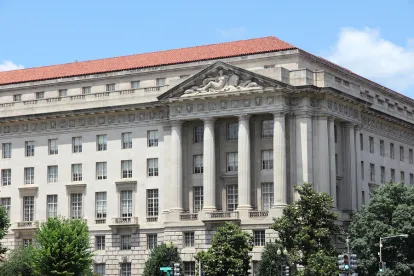The U.S. Environmental Protection Agency (EPA) Office of Inspector General (OIG) announced the availability of its fiscal year (FY) 2022 oversight plan on December 14, 2021. According to OIG, the plan reflects the priority work that the OIG believes is necessary to keep EPA, the U.S. Chemical Safety and Hazard Investigation Board (CSB), and Congress fully informed about issues relating to the administration of EPA programs and operations. The planned oversight projects concerning Ensuring the Safe Use of Chemicals include:
-
Audit of EPA’s Management of New Chemical Risk Assessments Conducted under the Toxic Substances Control Act (TSCA): Determine the extent to which EPA is using and complying with applicable records-management and quality-assurance requirements and employee performance standards to review and approve new chemicals under TSCA to manage human health and environmental risks;
-
Evaluation of EPA Regions’ Oversight Responsibilities for State and Tribal Drinking Water Certification Programs: Determine whether select EPA regions are fulfilling oversight responsibilities for drinking water certification programs in states and tribal nations;
-
Evaluation of EPA’s Use of Pesticide Incident-Reporting Data: Determine whether EPA uses pesticide incident-reporting data to prevent unreasonable adverse effects on human health and the environment;
-
Evaluation of Implementation of EPA’s Federal Certification for Applicators and Dealers of Restricted-Use Pesticides within Indian Country: Determine how EPA monitors and enforces the requirements for restricted-use pesticide applicators (private and commercial) and restricted-use pesticide dealers in Indian Country;
-
Evaluation of EPA’s Progress toward Providing States with Clear Benchmarks to Address Per- and Polyfluoroalkyl Substances (PFAS) in Drinking Water: Determine why EPA has not established a mandatory limit for PFAS in drinking water; what challenges may prevent EPA from setting such a limit; and what EPA’s plan -- if one exists -- is for implementing such a limit; and
-
Evaluation of EPA’s Progress to Identify Key Regulatory Stakeholders for TSCA Existing Chemical Risk Management: Determine whether EPA identified and partnered with key regulatory stakeholders and developed a process to coordinate the regulation of occupational exposures from existing chemicals under TSCA.
Ongoing projects concerning Ensuring the Safe Use of Chemicals include:
-
Evaluation of EPA’s Cancer Assessment Review for Pesticide 1,3-Dichloropropene: Evaluate the extent to which EPA followed policies and procedures in developing the cancer assessment for the 1,3-dichloropropene pesticide registration review decision to prevent unreasonable adverse effects on human health; and
-
Evaluation of EPA’s Overdue Residual Risk and Technology Reviews: Evaluate whether EPA has conducted residual risk and technology reviews in a timely manner, as required for EPA to revise standards, as needed, to protect the public from air toxics emitted by stationary sources.
Planned and ongoing projects concerning Safeguarding Scientific Integrity Principles include:
-
Congressional Request: Evaluation of EPA’s Changes to Final Perfluoroalkyl Carboxylate and Perfluoroalkyl Sulfonate Significant New Use Rule (SNUR): Determine the extent to which EPA followed applicable policies, procedures, and guidance for the changes made to the Long-Chain Perfluoroalkyl Carboxylate and Perfluoroalkyl Sulfonate Chemical Substances SNUR between the EPA Administrator’s signing of the final SNUR on June 22, 2020, and the publication of the final SNUR in the Federal Register on July 27, 2020; and
-
Evaluation of EPA’s January 2021 Perfluorobutane Sulfonic Acid (PFBS) Toxicity Assessment: Determine whether EPA’s Office of Research and Development (ORD) and Office of Chemical Safety and Pollution Prevention (OCSPP) followed applicable policies and procedures in the development and publication of the January 19, 2021, PFBS toxicity assessment.
OIG states that it is important to note that its planning efforts “are not static and that the projects included herein may be modified throughout the year as challenges and risks for the EPA and the CSB evolve and emerge.”




 />i
/>i

